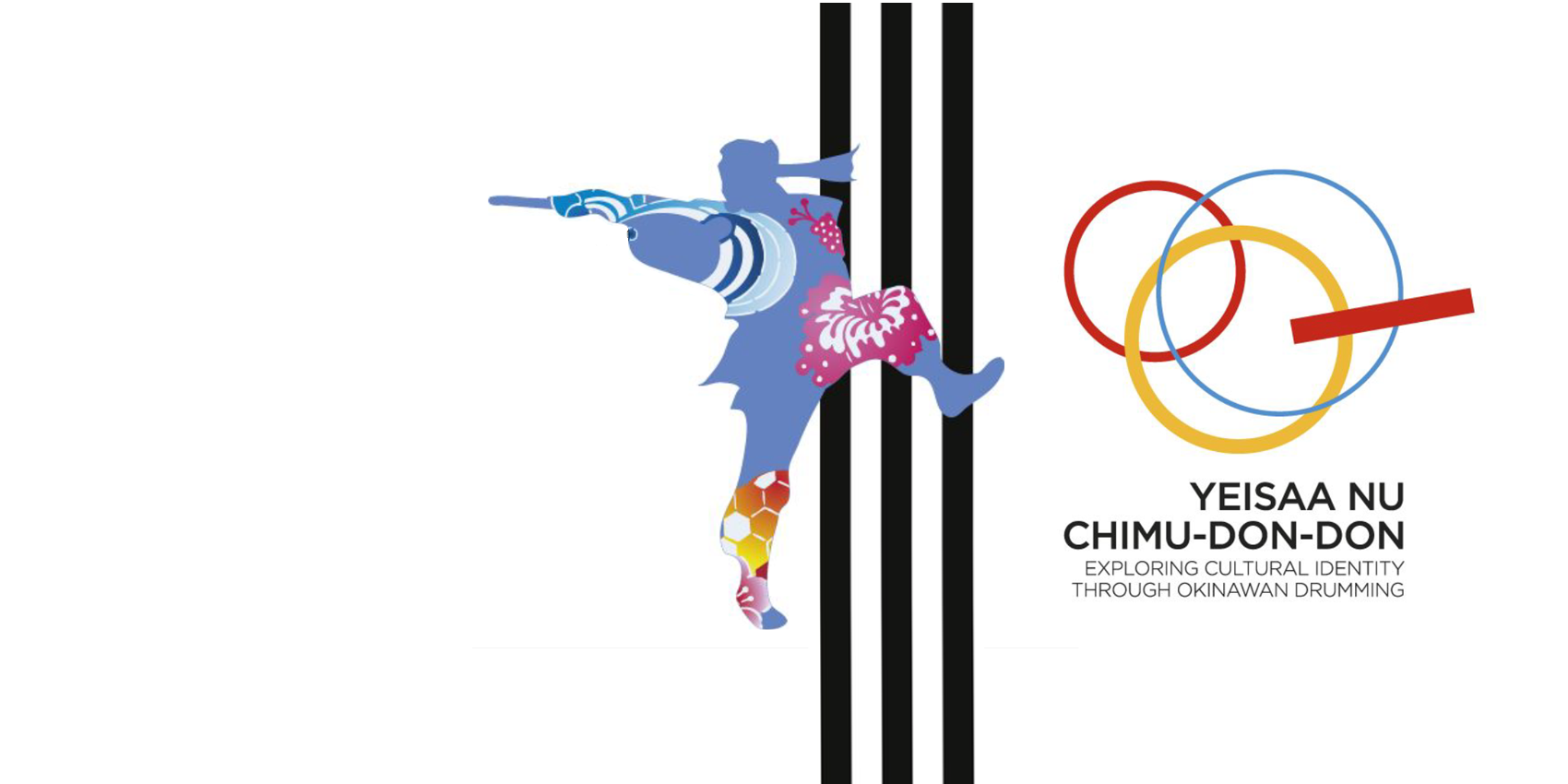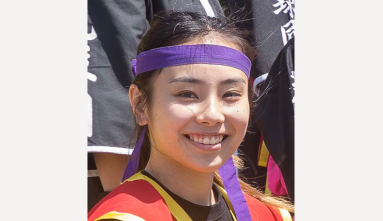

Eisa is a traditional Okinawan folk dance and musical performance to honor the spirit of Okinawan ancestors. As Okinawans migrated and settled all over the world, their music and dance traditions traveled with them.
Join us for a conversation and Q&A with members of contemporary eisa groups—Lisa Tamashiro Maumalanga (Chinagu Eisa Hawaii), Rentaro Suzuki (Ryukyukoku Matsuri Daiko Los Angeles Branch), John Azama (Ryukyu Damashii), Cecilia Nue (Seiryu Eisa Kai), and Toshiyuki Yamauchi (Yuriki no Kizuna Eisá Daiko)—as they discuss how eisa connects them to their cultural heritage and identity. An interactive beginners tutorial and opportunity to talk with members from various eisa groups will follow the program.
The main program will be presented via Zoom with simultaneous translation in English, Spanish, and Portuguese. Registration is required. Limited space is available.
This program is presented by the Japanese American National Museum’s Discover Nikkei project. Community Partners: Peru Okinawa Association; Okinawan Association of America, Inc.; Hawaii United Okinawa Association; Associação Okinawa Kenjin do Brasil / Centro Cultural Okinawa do Brasil. Supported by The Nippon Foundation.
Schedule
3:00 PM - 4:30 PM
PROGRAM
Shari Y. Tamashiro, moderator / emcee
Panelists
- Lisa Tamashiro Maumalanga, Chinagu Eisa Hawaii (Honolulu, HI, USA)
- John Azama, Ryukyu Damashii (Dallas, TX, USA)
- Rentaro Suzuki, Ryukyukoku Matsuri Daiko Los Angeles Branch (Los Angeles, CA, USA)
- Cecilia Nue, Seiryu Eisa Kai (Lima, Peru)
- Toshiyuki Yamauchi, Yuriki no Kizuna Eisá Daiko (São Paulo, Brazil)
Please see bios below.
4:30 PM - 5:00 PM
INTERACTIVE TUTORIALS (optional)
Attendees are invited to participate in an interactive beginners tutorial with one of the eisa groups following the program. You will also have an opportunity to talk with group members.
-
Yubibue—Eisa Whistling with John Azama of Ryukyu Damashii
Join John Azama for an easy lesson in Yubibue (指笛), the Okinawan finger whistle used in Okinawan music. -
Heishi with Stephanie Ajifu of Ryukyukoku Matsuri Daiko Los Angeles Branch
Join Stephanie Ajifu for a lesson in heishi, Okinawan chants that eisa performers say as they simultaneously dance and hit their drums. -
Eisa Dance Steps with Cecilia Nue of Seiryu Eisa Kai
Learn about basic steps of eisa through a brief online class with Seiryu Eisa Kai. -
Kachashii and Uchinaaguchi Lessons with Lisa Tamashiro Maumalanga of Chinagu Eisa Hawaii
Discover kachashii, a fun dance performed during the closing of Okinawan festivities, and learn how to speak Uchinaaguchi, the language of the Ryukyu kingdom. -
Taiko 101 with Toshiyuki Yamauchi of Yuriki no Kizuna Eisá Daiko
Experience the power of taiko with Toshiyuki Yamauchi.
Please note that a translator will be available to assist in each session, but simultaneous translation will not be available in the breakout rooms.
Moderator / Emcee

Shari Y. Tamashiro
Shari Y. Tamashiro is a third generation Okinawan and fourth generation Japanese Cybrarian at Kapiʻolani Community College, University of Hawaiʻi (UH). She often serves as a bridge between UH and the local Okinawan community to connect university resources and expertise and to enhance community archivism and projects. She is passionate about storytelling (especially Hawaiʻi Japanese and Okinawan stories) and documenting primary source materials in her community. Curated the Looking Like the Enemy exhibit at Pearl Harbor National Monument, as well as the Battle of Okinawa and 100th, 442nd RCT, MIS, and 1399 exhibits. She is the first foreign and female World Eisa Ambassador.
Participating Groups

Chinagu Eisa Hawaii (Honolulu, HI, USA)
Established in 2008, Chinagu Eisa Hawaii is a contemporary and multigenerational Okinawan eisadrumming group that cultivates the Okinawan culture for local communities and younger generations. Members range from ten to eighty years old, with cousins, siblings, parents, grandparents, and grandchildren performing together. In the Okinawan language, Chinagu means “to connect.” Chinagu Eisa Hawaii encourages reflection on the connection between group members’ generations, Okinawa and Hawaiʻi, and one’s culture and one’s own self.
Lisa Tamashiro Maumalanga is a Nisei. Her parents are from Haneji, Okinawa, and their family are members of Haneji Club. She is the founder, past president, and current advisor for Shinka, a club of the Hawaii United Okinawa Association (HUOA). She started her cultural journey by learning koto with Toma Toyoko Sokyokukai. She then devoted herself to eisa and is the founder and past president of Chinagu Eisa Hawaii. She is the director of Operations and Special Programs at Adult Friends for Youth and is committed to helping the Okinawan Community.

Ryukyu Damashii (Dallas, TX, USA)
Ryukyu Damashii was founded by Yukimi Iha and Ritsuko Shibayama in 2015. Through eisa, Ryukyu Damashii enhances relationships among parents and children, and develops their interest in Okinawa. The group provides the opportunity for everyone to experience and share Okinawa’s culture while teaching Okinawa’s culture to the next generation.
John Azama joined Ryukyu Damashii in 2018. After he moved to Dallas, Texas, in 2017 he was invited to join the group. When he attended their practice, they were rehearsing the folk songs “Asadoya Yunta,” “Miruku Munari,” and “Ashibina” which he was familiar with and was able to dance in their upcoming event. Since then he has taught other dances and has simplified some of the dance routines so that everyone can have a good time.

Ryukyukoku Matsuri Daiko Los Angeles Branch (Los Angeles, CA, USA)
Ryukyukoku Matsuri Daiko (Ryukyu Kingdom Festival Drums) is modeled on the traditional Okinawan obon festival drum dancing called eisa where performers dance and drum to an exciting blend of traditional and contemporary Okinawan and Japanese music. Founded in Okinawa in 1982, Ryukyukoku Matsuri Daiko has chapters in Japan, South America, and the US. The Los Angeles branch was established in 1995 and will celebrate its thirtieth anniversary in 2025.
Rentaro Suzuki (panelist) has been a member of Matsuri Daiko for eight years. Hailing from Culver City, California, He is a senior at Culver City High School. He found eisa through a third grade performance activity and after being invited to watch the Los Angeles chapter’s twentieth anniversary, he was fascinated by the performance and decided to join the group.

Stephanie Ajifu (tutorial instructor) is the current leader for the Ryukyukoku Matsuri Daiko Los Angeles branch. Hailing from Torrance, California, she is a senior at California State Polytechnic University, Pomona. She joined the Los Angeles chapter when she was ten years old through Gardena’s Okinawa community and after eleven years of drumming, she became the leader of the Los Angeles chapter in 2023.

Seiryu Eisa Kai (Lima, Peru)
Seiryu Eisa Kai is a modern eisa group created in 2017 to promote Okinawan culture through dance with taiko, shime, and paranku—traditional percussion instruments used in matsuri or festivals held throughout Japan. Seiryu Eisa Kai formed to develop choreographies and perform dances collaboratively with other groups. Their goal is to express the fusion of cultures through dance.
Since childhood, Cecilia Nue has had a strong interest in Japanese culture. Thanks to her friends, she immersed herself in the dances and events organized by the Peruvian Japanese community. In 2010, she discovered eisa and over the years learned the captivating drum dance. In 2017, she founded Seiryu Eisa Kai. By blending musical genres and collaborating with talented artists to create new choreographies she has strengthened her connection with Japan and enriched her love for its culture.

Yuriki no Kizuna Eisá Daiko (São Paulo, Brazil)
Founded in 2022, Yuriki no Kizuna Eisá Daiko promotes Okinawa culture through eisa, emphasizing values such as friendship and tradition.
Toshiyuki Yamauchi began his activities in Okinawan culture at the age of three through eisa. He participated in the group Ryukyukoku Matsuri Daiko Brasil from 2007–2017 and founded Yuriki no Kizuna Eisá Daiko to spread and disseminate Okinawan culture through eisa.
Partnering Organizations

Okinawa Association of America, Inc.
Founded in 1909, the Okinawa Association of America (OAA) promotes, preserves, and perpetuates Okinawan culture. In addition to cultural awareness and education, OAA also engages in local and international cultural exchanges. Fourteen clubs, classes, and committees support OAA’s mission including the Fujin-bu Women’s Club and the Young Okinawans of Southern California. As a member-supported nonprofit, OAA currently has 700 Family, Individual and Student level memberships totaling over 1,000 members in Southern California, the US, and overseas.

Hawaii United Okinawa Association
The Hawaii United Okinawa Association (HUOA) is a 501(c)(3) nonprofit organization serving as the umbrella organization for fifty member clubs statewide, representing over 40,000 Okinawa immigrants and descendants in Hawai‘i. HUOA’s mission is to promote, perpetuate, and preserve the Okinawan culture in Hawai‘i. HUOA hosts the annual Okinawan Festival, the biggest ethnic event in the state traditionally held on the Saturday and Sunday of Labor Day weekend. The HUOA is also a charter member of the United Japanese Society of Hawaii.

Asociación Okinawense del Perú
The biggest number of Japanese immigrants that arrived in Peru came from Okinawa. It is estimated that 70% of Okinawan descendants constitute the Peruvian nikkei community. Immigration from Okinawa began in 1906, when thirty-six men arrived in Peru. In 1910, Sentei Yaki founded the Peru Okinawa Association (Asociación Okinawense del Perú). Its mission is to look out for the Uchinanchu community in Peru and organize cultural, social and sports activities.

Associação Okinawa Kenjin do Brasil / Centro Cultural Okinawa do Brasil
Okinawa Kenjin Association of Brazil (AOKB) and the Okinawa Cultural Center of Brazil (CCOB) promote and encourage exchanges between Brazil and Japan, especially with the province of Okinawa, to strengthen friendships and contribute to the appreciation and preservation of the history, culture, and contributions of Japanese immigration in Brazil. The association’s goal has always been one of fraternization and mutual assistance among Okinawans as expressed in the sayings “Ichariba choodee” (“When we meet, we become brothers”) and “Yuimaaru” (“mutual assistance”). The association has always represented Brazil’s Uchinanchu community to the government of Okinawa, serving as a bridge to maintain the ties between the mother province and its descendants on the other side of the world.
